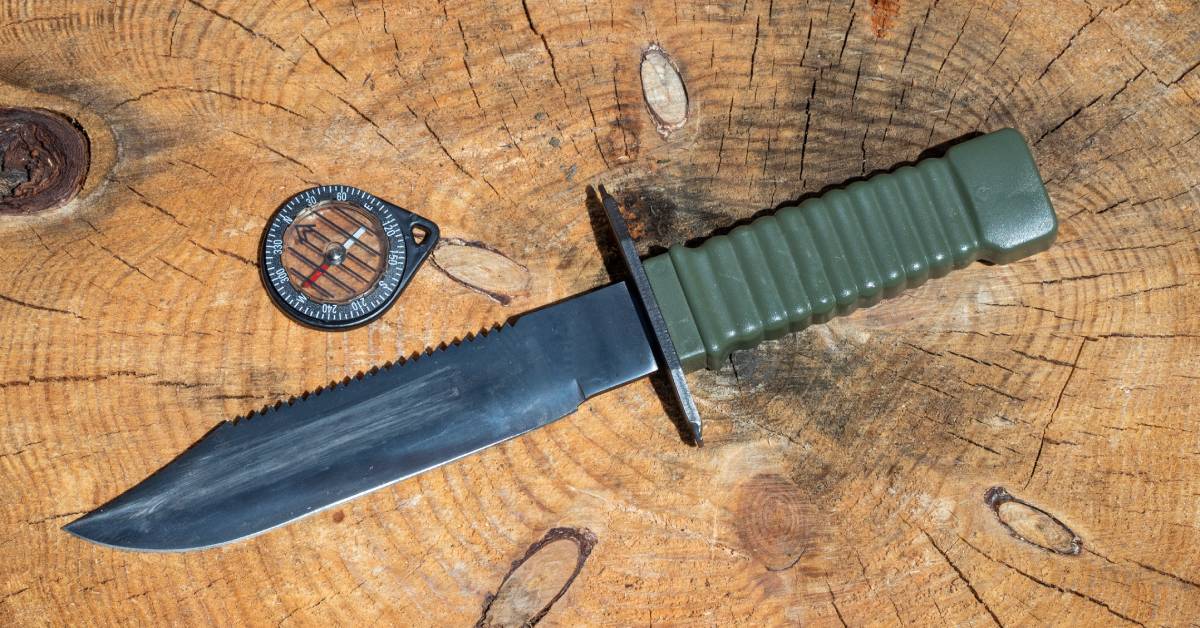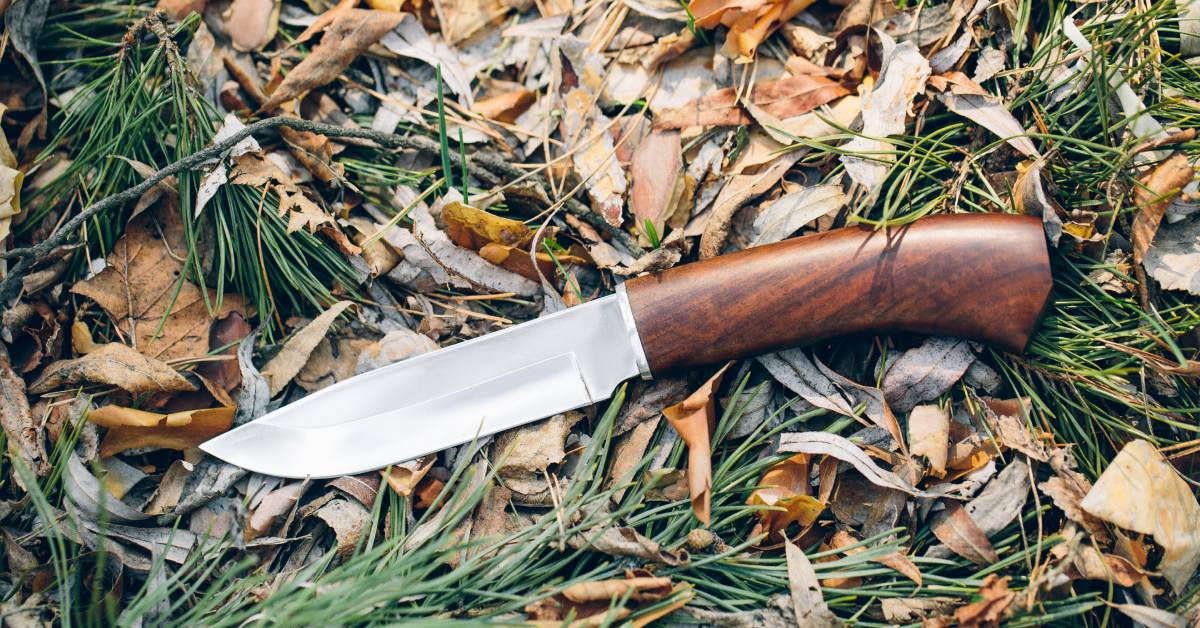Survival Knife vs. Hunting Knife: What’s the Difference?
Jun 13 2024 - 3:58
When venturing into the great outdoors, having the right tools can make all the difference. Among these essential tools, knives stand out for their versatility and utility. However, not all knives are created equal. Two common types for those exploring the great outdoors are survival knives and hunting knives. Each handles specific tasks, leading to some notable differences. Understanding these distinctions can help you choose the right knife for your needs, which is why we’re here to go in-depth on the differences between survival and hunting knives.
Understanding the Basics
Let’s start by covering the basics of each knife. The survival knife is a robust, multi-functional tool designed to aid in various emergency situations one might encounter in the wilderness. These knives typically suit tasks such as building shelters, preparing food, first aid, and self-defense. They can withstand heavy use and challenging conditions, making them indispensable in survival situations.
On the other side of things, we have the hunting knife, which suits field dressing and game processing. Its main function is to assist hunters in skinning and gutting animals after a successful hunt. While hunting knives can work for other camp tasks, their design is perfect for handling animal hides and meat efficiently.
Blade Design and Characteristics

One of the most noticeable differences between survival and hunting knives is the design of their blade. Survival knives often feature a thicker, sturdier blade made from high-carbon or stainless steel. The blade length typically ranges from 5 to 12 inches, providing enough size and weight for chopping, batoning, and other heavy-duty tasks. The blade of a survival knife may also have a serrated edge for sawing through tough materials, as well as a flat ground edge for general cutting tasks.
Hunting knives, in contrast, usually have a thinner, more flexible blade to facilitate precise cutting during field dressing. The blade length is generally shorter, ranging from 3 to 6 inches, which offers better control for intricate tasks like skinning and gutting. Some hunting knife blades will have a curved shape, with a sharp point designed to make initial cuts in the animal’s hide. The drop point and clip point are common blade shapes for hunting knives, each providing specific advantages for different aspects of processing game.
Handle and Ergonomics
The handle design of survival knives and hunting knives is another aspect that accurately reflects their intended uses. A survival knife handle typically features durable, non-slip materials such as rubber, G10, or Micarta. These materials provide a secure grip, even in wet or slippery conditions. For some more complex models, the handle may incorporate additional features, such as a built-in compass, fire starter, or storage compartment for small survival items.
Manufacturers design hunting knife handles, however, with ergonomics and comfort in mind, ensuring a firm grip during long periods of use. Materials commonly used for hunting knife handles include wood, bone, and synthetic materials. These handles often fit comfortably in the hand and reduce fatigue during extended use. The focus is on providing a stable grip for precise cuts rather than incorporating multiple survival features.
Versatility and Functionality

Survival knives are renowned for their versatility. They can work for a wide range of tasks beyond cutting, such as digging, prying, hammering, and even as a weapon for self-defense when necessary. The robust construction of survival knives allows them to perform heavy-duty tasks that would be too demanding for a hunting knife. This versatility makes survival knives ideal for situations where you need a single tool to handle multiple challenges.
While hunting knives are specialized for processing game, skilled hunters can still use them for other camp tasks, such as cutting rope, slicing food, and whittling. However, their design is not as versatile as that of survival knives, and they are less suited for such heavy-duty tasks, so it’s better to carry a secondary knife for these uses. Doing so will help you ensure that you keep your hunting knife in good condition, allowing you to prioritize precision and control over versatility.
Maintenance and Durability
Survival and hunting knives are similar in the sense that they both require regular maintenance to ensure their performance and longevity. However, the techniques used vary a bit between each type. Survival knives, with their thicker blades and robust construction, are generally more durable and resistant to wear and tear. They can withstand heavy use and harsh conditions without losing their edge or structural integrity. However, this durability comes with the need for regular sharpening, especially if you frequently use the knife for chopping and batoning.
Being more specialized, hunting knives require meticulous care to maintain their sharpness and flexibility. The thin blades are prone to dulling, especially after processing multiple animals. Regular honing and sharpening are essential to keep the blade in optimal condition. Additionally, it’s best to clean hunting knives thoroughly after each use to prevent the buildup of blood and tissue, which can cause corrosion and affect the blade’s performance.
Choosing the Right Knife
Before reading through this guide, many would have assumed that survival and hunting knives were practically the same. Now that you know otherwise, the decision will ultimately depend on your specific needs and activities when choosing a knife for your outdoor needs. If you’re an outdoor enthusiast who engages in a variety of wilderness activities, a survival knife’s versatility and durability make it an excellent choice. It will serve you well in emergency situations and perform a wide range of tasks, making it a reliable companion in the wild.
If you go hunting regularly, a hunting knife will be the most appropriate tool for your needs. Its specialized design ensures efficient processing of game, allowing you to handle the task with precision and control. While it may not be as versatile as a survival knife, a hunting knife excels in its specific role and will make your hunting trips more efficient and enjoyable.
Of course, for those of you who partake in many outdoor activities, there’s no harm in getting one of each. That way, you can be prepared for any scenario you come across in the wilderness. To get the best survival and hunting knives on the market, check out our collection of TOPS knives for sale. This brand carries each type of blade, so you’ll be able to select a pair that makes it easier than ever to tackle what Mother Nature throws your way.
Go Further:
Different Types of Fixed-Blade Knives and Their Uses
4 Things To Consider When Buying Knives Online
Tips for Choosing the Best Folding Knives
MagnaCut Steel: The Future of Knives
